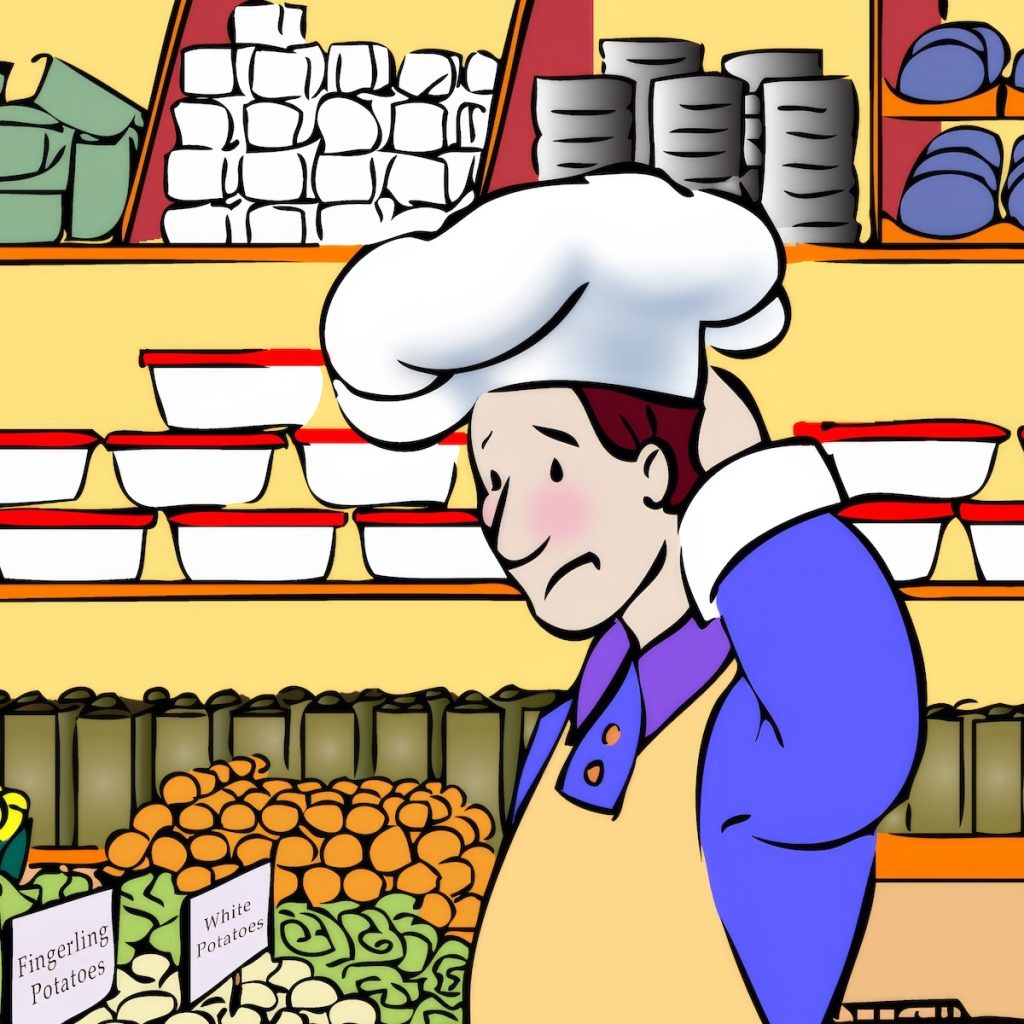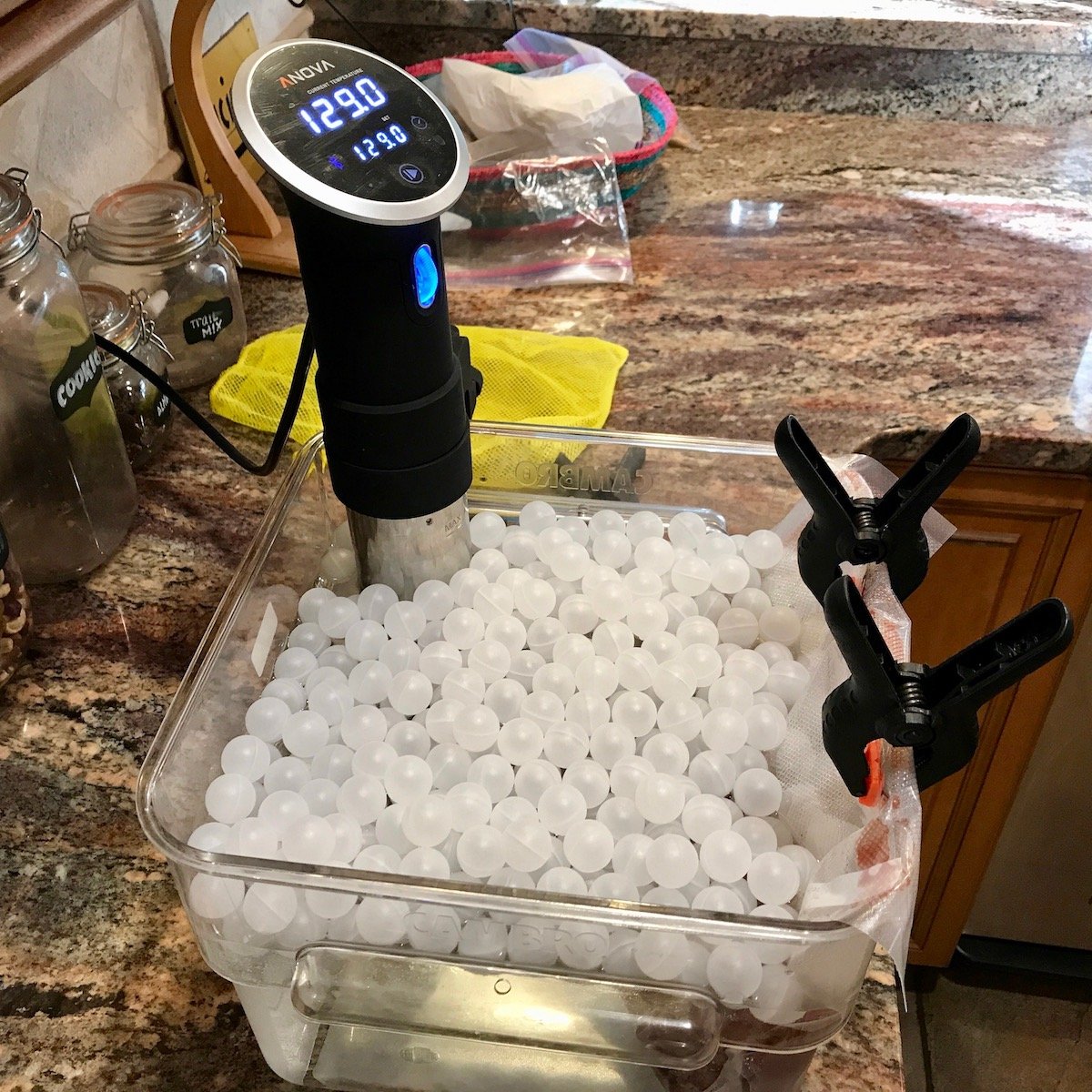What Am I Going To Cook For Dinner Tonight?
What are your last minute cooking thoughts? It’s 5:45 pm. The kids are asking what’s for dinner, your wife (husband) will be home in 30 minutes, and you have yet to think about what to make. What do you do?
I find myself in this situation all the time in our house. I’m not too busy working on my computer stuff, not organized enough, and love the challenge of putting out a decent meal in 30 minutes or a combination of all three, but I seem to be in this position a lot.
Sure, if I were on top of my game, I would set up the week’s meals on Sunday, do all the shopping, prepare a meal or two that day, and make my life easy. No way. Unless there is something special I want to try or we are having guests, I typically decide what to make at the last moment.
I don’t recommend this style of cooking everyday meals to anyone, but I bet many of you fall into this category. Not only does it put added pressure on you at the end of the day when the kids are tired and starting to get cranky, but you have to come up with meals that you can cook fast without much prep.
It also means you better have a well-stocked pantry, refrigerator, and freezer with plenty of shortcuts to whip something up quickly.
Same Meal Another Day
Falling into a cooking rut is a common experience for many home cooks. It happens when you repeatedly prepare the same meals, relying on familiar recipes and ingredients. While there’s comfort in routine, sticking to a limited menu can lead to a few drawbacks.
First, cooking the same meals can become monotonous, leading to a lack of enthusiasm and enjoyment in the kitchen. The excitement of trying new flavors and experimenting with different cuisines can fade, leaving you feeling uninspired and bored. This lack of variety affects your culinary creativity and can impact your overall enjoyment of meal preparation.
Additionally, eating the same dishes repeatedly may result in a less balanced diet. Relying on a few staple recipes can lead to nutritional imbalances, as you might miss out on essential vitamins and minerals in a wider variety of foods. Diversifying your meals ensures you incorporate a broader range of nutrients and flavors.
To break free from a cooking rut, consider exploring new recipes, experimenting with different ingredients, or incorporating international cuisines into your weekly meal planning. Embracing variety in your cooking revitalizes your kitchen routine, enhances your dietary health, and keeps mealtime exciting.
What to Do
The pressure of last-minute dinner decisions can feel overwhelming, especially when time is short and options seem limited. But instead of feeling stuck, this is the perfect opportunity to get creative with what you already have on hand. Sometimes, the best meals come from impromptu ideas and a little resourcefulness.
Before you decide, take a quick mental inventory of your ingredients. Do you have proteins like chicken, beans, or tofu?
Are there any veggies that need to be used up? What about staple grains like rice, pasta, or quinoa?
Thinking about a simple formula—protein, vegetable, and starch—can help streamline the decision-making process. And don’t forget to check for spices, sauces, or broths that can make a simple meal flavorful.
Last-minute cooking doesn’t have to be stressful. You can transform random ingredients into a satisfying dinner with some imagination and flexibility.
Whether it’s a quick stir-fry, pasta dish, or hearty salad, the key is to stay open to whatever your kitchen offers. Let’s explore some ideas to help you whip up something delicious on the fly!
Last Minute Cooking Formula
Using a formula to determine what to cook for dinner can simplify meal planning and reduce decision fatigue. The idea is to break down your meals into key components, making mixing and matching ingredients you already have easier. Here’s a basic formula to guide your dinner decisions:
1. Protein
Start with a protein source. This could be meat (like chicken, beef, or pork), seafood, tofu, tempeh, beans, or legumes. Protein is essential for a balanced meal and provides the primary substance of your dish.
Examples: Chicken breast, salmon, chickpeas, or tofu.
2. Vegetables
Next, choose a variety of vegetables. They add flavor, texture, and essential nutrients to your meal. You can use fresh, frozen, or even canned vegetables.
Examples: Bell peppers, spinach, carrots, or broccoli.
3. Starch or Grain
Incorporate a starch or grain to make the meal more filling. This could be rice, pasta, quinoa, potatoes, or bread.
Examples: Brown rice, whole wheat pasta, sweet potatoes, or quinoa.
4. Flavor Enhancers
Add flavor with herbs, spices, sauces, or condiments. This step lets you get creative and adjust the flavor profile to suit your taste or the desired cuisine.
Examples: Garlic, ginger, soy sauce, or a sprinkle of cumin.
Putting It All Together
With these components in mind, you can create various meal combinations. For instance:
- Chicken Stir-Fry: Chicken (protein), bell peppers, broccoli (vegetables), rice (starch), soy sauce, and ginger (flavor enhancers).
- Quinoa Salad: Chickpeas (protein) + spinach and cherry tomatoes (vegetables) + quinoa (starch) + olive oil and lemon juice (flavor enhancers).
Using this formula, you streamline the decision-making process, reduce the stress of figuring out what to cook, and ensure you’re preparing balanced and varied meals. This approach also allows you to use up ingredients you have on hand and make the most of what’s already in your pantry or fridge.
Cooking Techniques
Cooking techniques like grilling, roasting, and sautéing play a crucial role in determining how your ingredients are prepared and, ultimately, the flavors and textures they bring to the dish. Once you’ve decided on the components of your meal using the formula—protein, vegetables, starch, and flavor enhancers—the next step is choosing the right cooking technique to tie everything together. Here’s how different techniques can enhance your meal:
1. Grilling
Grilling is ideal for adding a smoky, charred flavor to proteins like chicken or beef or vegetables like zucchini or peppers. The high heat from the grill creates a crispy exterior while keeping the inside juicy, making it perfect for quick-cooking lean meats or firm vegetables. It’s also a healthy method since excess fats drip off during cooking.
Example: Grilled chicken with grilled vegetables and a quinoa salad.
2. Roasting
Roasting involves cooking food in the oven at high temperatures, which brings out the natural sugars in vegetables, making them caramelized and sweet. This technique is excellent for root vegetables, potatoes, and proteins like chicken or fish. Roasting can also help develop deep, rich flavors with minimal effort.
Example: Roasted salmon with a medley of roasted carrots, sweet potatoes, and a drizzle of olive oil.
3. Sautéing
Sautéing is a quick cooking method that uses a small amount of oil or butter in a pan over medium to high heat. It’s perfect for tender proteins like shrimp or chicken strips and vegetables like spinach, mushrooms, and onions. Sautéing allows you to cook food while quickly preserving its natural textures and flavors.
Example: Sautéed chicken with garlic and a side of spinach sautéed in olive oil, paired with brown rice.
4. Boiling or Simmering
These methods are typically used to cook grains like rice and pasta or create soups and stews. Boiling rapidly cooks the starches, while simmering gently cooks proteins or veggies, allowing flavors to meld together over time. Simmering is often used for dishes like curries or slow-cooked stews that benefit from long, gentle cooking.
Example: A hearty chicken and vegetable stew with simmered carrots and potatoes served over boiled rice.
5. Baking
Baking uses indirect heat in the oven and is excellent for cooking casseroles, baked pasta dishes, or even stuffed vegetables. It allows flavors to meld together and often produces a golden, crispy crust when using cheeses or breadcrumbs.
Example: Baked pasta with cheese, sautéed vegetables, and a side salad.
6. Steaming
Steaming is one of the healthiest cooking methods. It preserves the nutrients in vegetables while keeping them crisp and fresh. It’s great for delicate proteins like fish and vegetables like broccoli or spinach.
Example: Steamed fish with a side of steamed broccoli, served with couscous.
Bringing It All Together
Your chosen cooking technique significantly affects your meal’s texture, flavor, and nutritional value. For example, grilling and roasting develop deep flavors with crispy textures while sautéing and steaming retain more of the ingredients’ natural qualities. Choosing the proper technique can elevate a simple meal, allowing you to transform basic ingredients into something truly delicious.
Using your protein, vegetables, starch, and flavor enhancers as a base, you can experiment with different cooking techniques to add variety and excitement to your meals, even when using similar ingredients.
As always, I appreciate your comments, feedback, and suggestions, and would love to hear about your last minute cooking thoughts.





6 Responses
Cooking for a living and coming home, only to have to fix a good dinner; adds another dimension to the “what’s for dinner dilemma”.
I don’t always have it together, either. However, when I do, I may cook a large roast for Sunday and find ways to alter it for 1 or 2 subsequent meals. Or changing a meatloaf into spaghetti with a meat sauce, for another example.
Thanks, Jan, for those suggestions. We often make a roast on Sunday for the week. – RG
I find not knowing what I’m going to cook some nights encourages me to be creative. The other night I had defrosted a boneless chicken breast. At the last minute, I cut it up into bite size pieces, and after browning a few strips of bacon (removed from pan and broken into pieces) I sauteed the chicken pieces, then added some left over ham pieces, the bacon, and added a sleeve of defrosted Joseph’s Garlic Scampi Sauce. After simmering for a few minutes, served it with mashed potatoes. It is a KEEPER meal. I would serve it to company!
There you go, Carol. Way to go. – RG
Maybe it is age–or just preservation, but over the last 10 years I have used a grocery list that lists the days of the week at the top of the page and grocery departments in columns–I also have a section for Misc. for side trips to other stores. I fill it out weekly on Thurs or Fri., sometimes using the newspaper ads, coupons or recipes. We also have a magnetic tear off list on the refrigerator to remind us of what we have run out of during the week. At the top, I list the menus for each day, alternating between red meat, poultry, fish, and vegetarian meals–I also include the side dishes. Aside from ensuring you bring the list back after you shop, so you remember what you planned, it is fairly foolproof. In fact, you eventually come to rely on it — at least I did.
Great ideas Estelle, thank you – RG